One of the things I was most looking forward to on my trip to Japan, was taking the bullet train! I did a lot of research before I went so wanted to compile it into a post to answer all the questions I had, for anyone else planning on taking the bullet train. As someone that loves train travel, the bullet train ended up being one of the highlights of my trip.
Download my super detailed 48 page Japan itinerary in this post: Japan Itinerary (11 days in Tokyo, Osaka and Kyoto during cherry blossom season)
This post is broken down into:
- Where does the bullet train go?
- Luggage storage
- Do you need to pre book bullet train tickets?
- Which ticket class should you book?
- How to book tickets
- Is the JR Pass worth it?
- How much does the bullet train cost?
- Toilets
- Food
- Does the train feel fast when you’re on it?
- How frequent are the trains?
- Can you see Mount Fuji from the train?
And most importantly, do I recommend the bullet train?
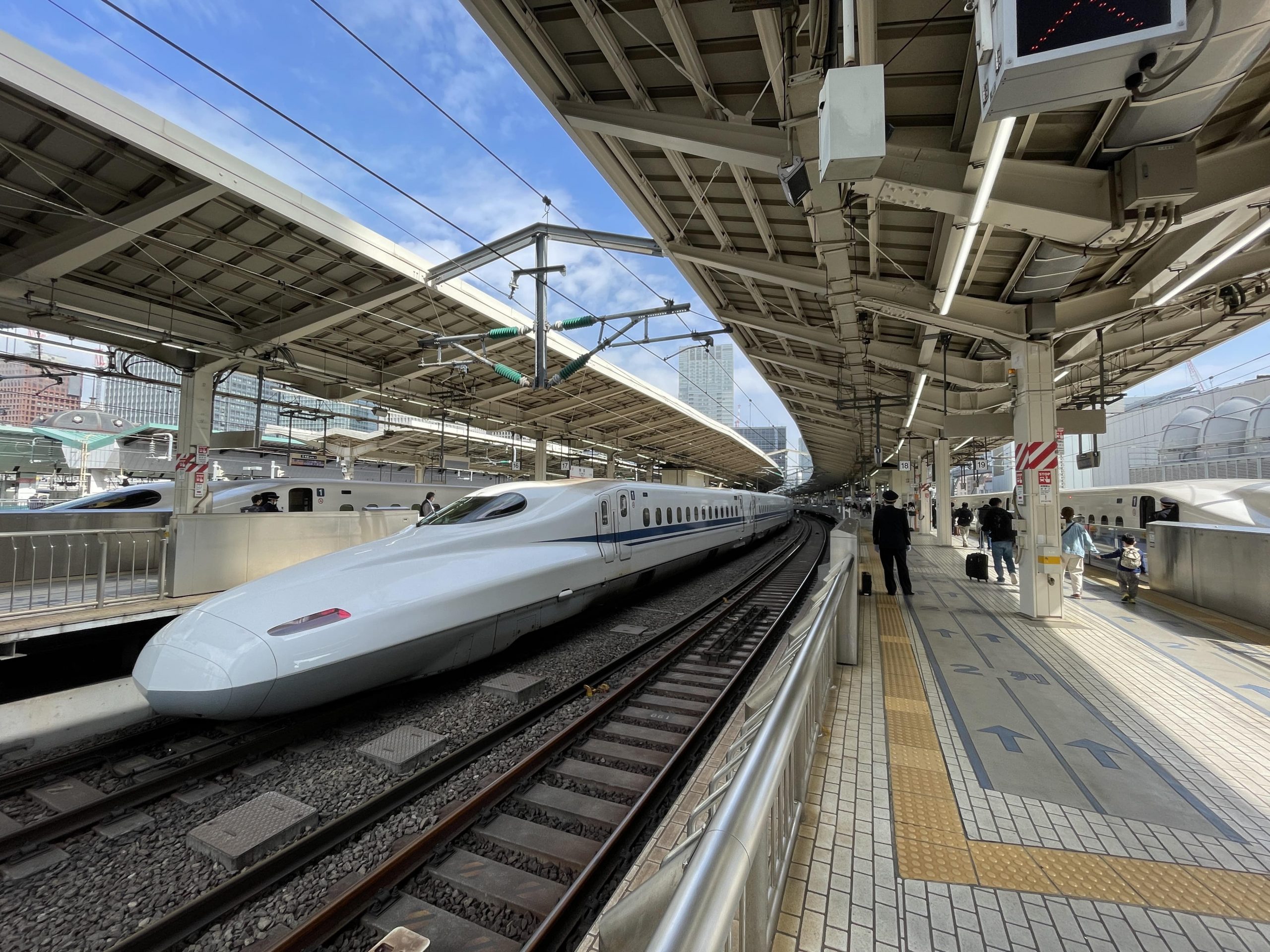
Where does the bullet train go?
The bullet train goes to the main tourist areas (Tokyo, Kyoto, Osaka, Hakone, Hiroshima) and many other destinations too! There are plenty of maps and route information on the JR Pass website.
I took the bullet train from Tokyo Central Station to Kyoto Central Station, and then a few days later from Kyoto back to Tokyo. You can also take it from Kyoto to Osaka (or visa versa) – that route only takes 15 minutes!
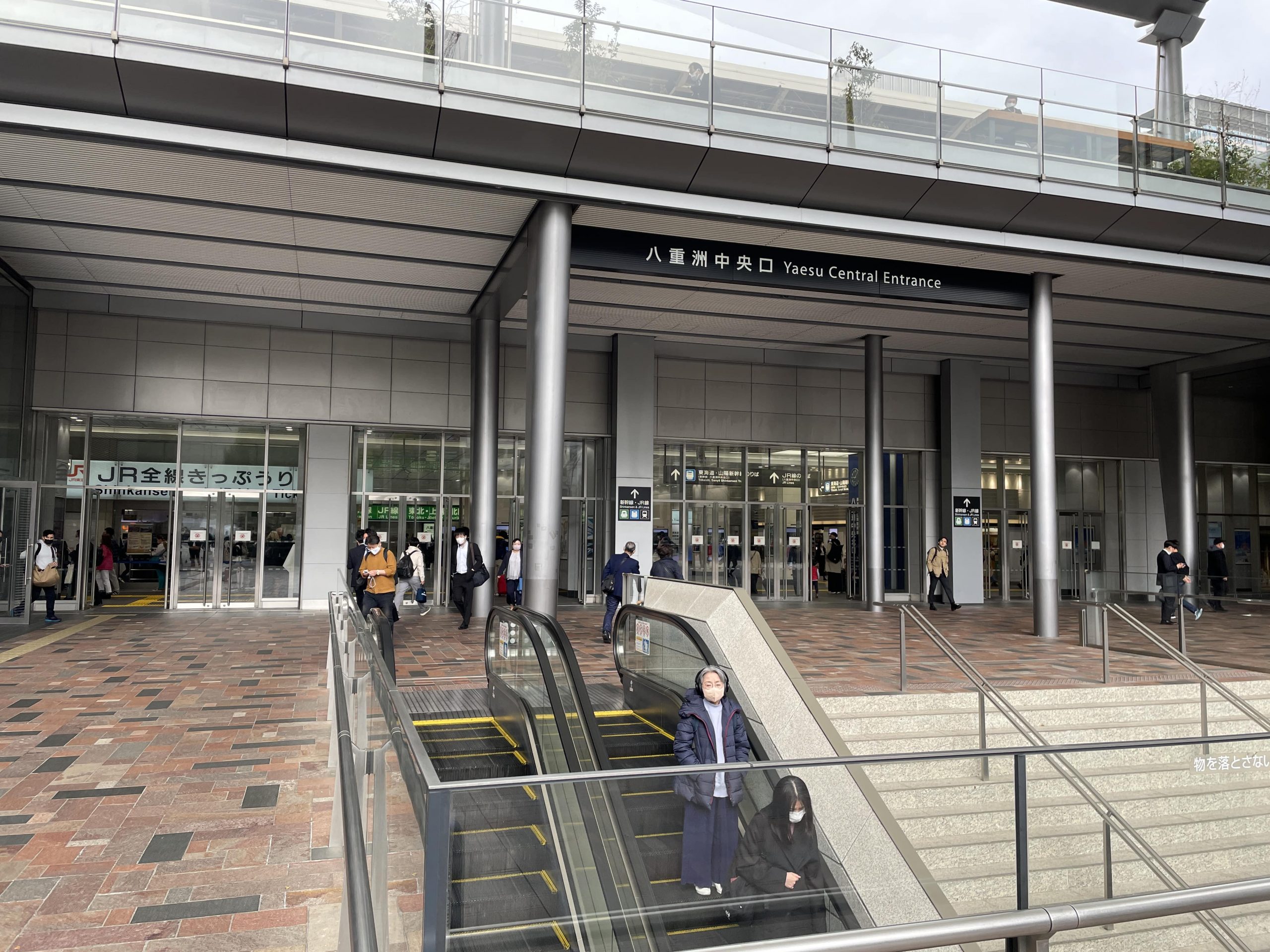
If you’re taking an Uber to the Tokyo central train station, ask for drop off at the Yaesu central entrance
I wouldn’t recommend getting a local train to the central stations and then changing to the bullet train. The underground stations have lots of stairs, it’s busy and chaotic with people and to navigate and it’s just much easier if you use an Uber.
Luggage Storage
A place to storage your luggage on long distance trains always seems to be a problem no matter what country you go to.
I always watch YouTube videos and read people’s reviews on their blogs before I go to a new country to suss out the situation. All of them showed that there isn’t much storage space on the train. You have to lift your luggage into the overhead compartment which is not possible if you have a checked size suitcase (circa 15kg or more) – it’s too big for the overhead compartment and it would be too heavy to lift it up there anyway. The stops between stations is barely 2 minutes (there’s even a warning announcement on the train telling you to be at the doors ready to get off before the train arrives at the station).
So what are the options? You can book a special ticket that reserves you a seat in the last row of the carriage where there is some space behind the seats to store your luggage. In economy it’s a 3 seat x 2 seat configuration so up to 5 people are going to want to store their luggage in a space that will probably fit 4 checked size suitcases at most.
Or you can book the last row of a carriage in green (business) class which has a 2 seat x 2 seat configuration and can fit up to 4 large checked size suitcases behind the seats in the last row.
Long story short, I splurged for the green class tickets. Note: green class is not included in the JR Pass (more on that later in this post).
The train door opening is narrow so you may need to load your luggage in sideways. The train doors open level with the platform, you don’t need to lift suitcases up a step or two like you do with most European trains.
Please note I looked everywhere but couldn’t find a lift at Tokyo Central Station, I had to lift suitcases up some short stairs and escalators. There were lifts at Kyoto station.
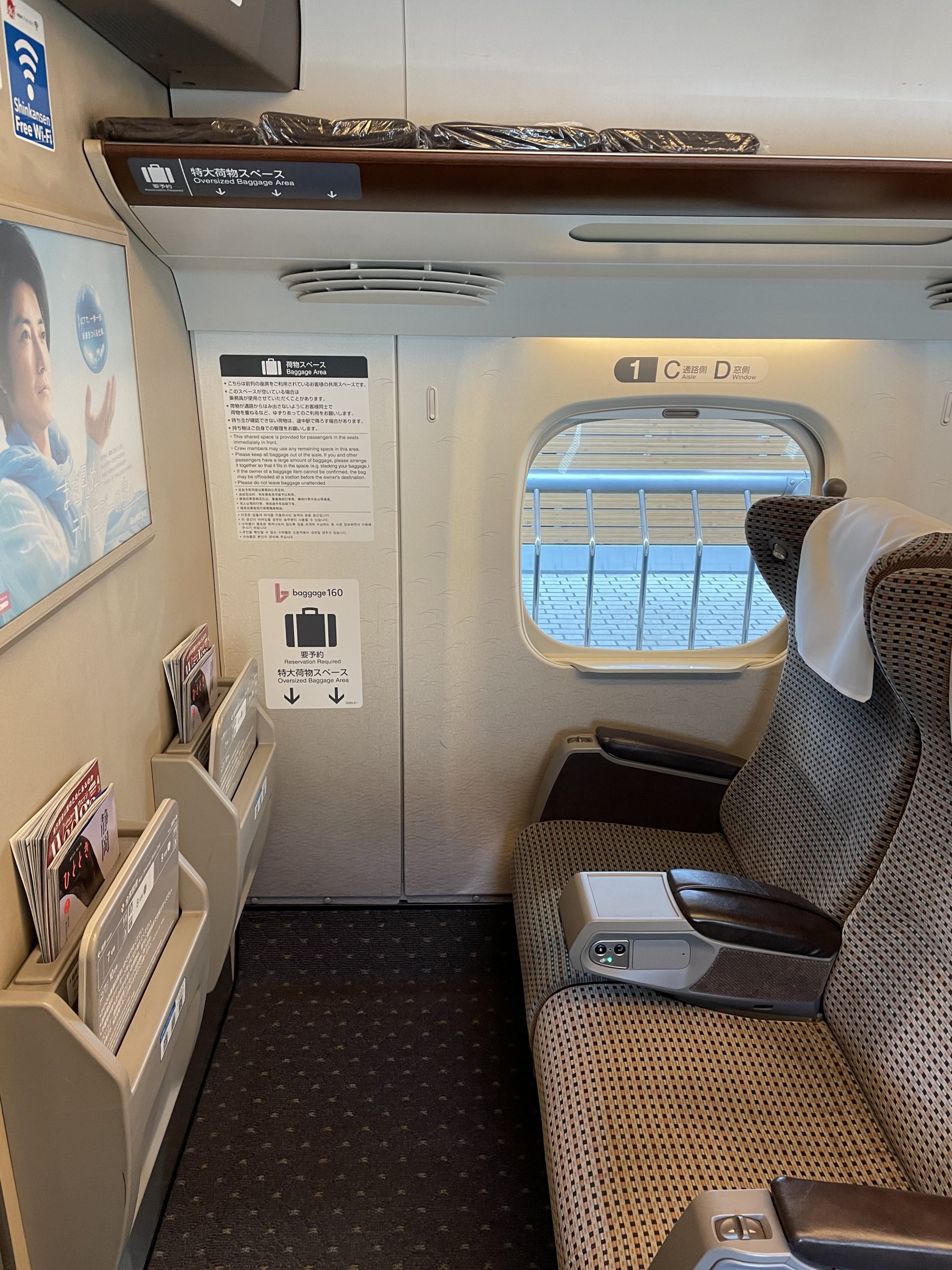
Green class on the bullet train (think of it like ‘business class’ on a plane).
Do you need to pre book bullet train tickets?
If you look at booking websites for the bullet train they recommend pre-booking during Golden Week but interestingly, only some of the sites said to pre-book during cherry blossom season.
I like to pre-book everything and I went during cherry blossom season so I pre-booked my tickets.
The green class carriage I was in was about 20% full from Tokyo to Kyoto on Wednesday (10am departure). So even during ‘peak’ time there was still a lot of capacity. It was about 40% full from Kyoto to Tokyo on Monday (11am departure). The bullet trains are really long too (I think 16 carriages, I should’ve written it down), these trains can move 1,000+ people.
So long story short, I don’t think you have to pre-book your tickets.
If you want to queue at the station for tickets and buy them on the day of travel, the lines at both Tokyo and Kyoto station didn’t seem to be moving very fast, so factor in extra time.
I have a friend who has been to Japan 3 times and has the complete opposite travel style to me – a very go with the flow, nothing is pre-booked approach to travel. They thought it was over the top for me to pre-buy tickets and said they always buy them when they get there and have never had any issues not getting the train departure time they were aiming for (they don’t travel during peak times of the year though).
Long story short, I don’t think you need to pre-buy the bullet train tickets but I recommend pre-booking them if you don’t have a flexible schedule and so you don’t have to worry about a possible language barrier when buying tickets.
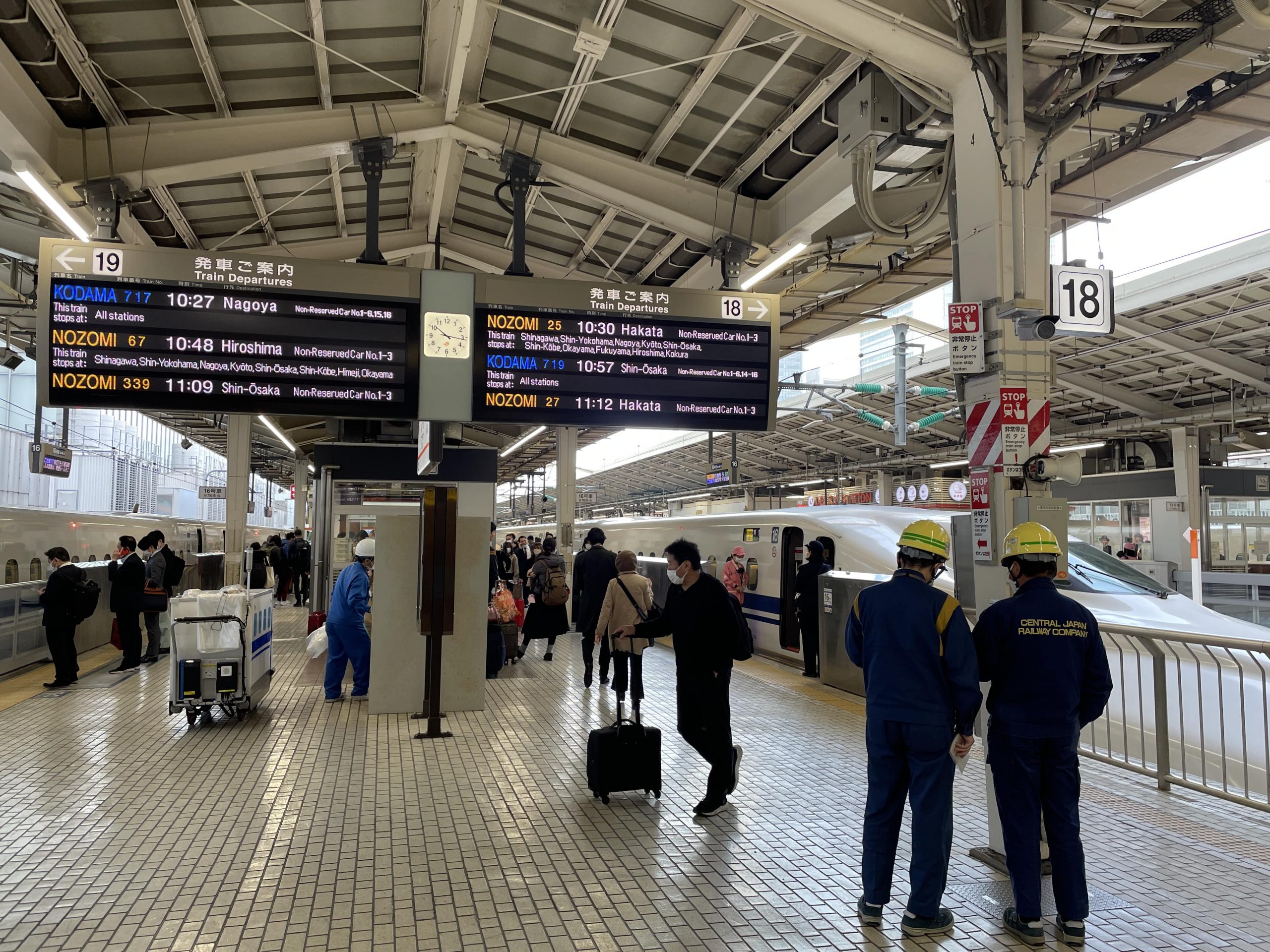
The screens at the station clearly display which trains are coming next. There were people around that you could ask too if you’re unsure
How to buy tickets for the bullet train
For a country with a reputation for being technology advanced they’re really behind with their train ticket technology. They’re still using paper tickets! For local trains, the JR pass and bullet train tickets.
They print the tickets on paper and ship to a physical address (you have to pay for international shipping), or you can collect them at a main train station. I didn’t want the hassle of going to the station and finding the information counter and spend time queuing to collect the ticket, so opted to use the Shinkansen Ticket website which buys the tickets for you. This is not a sponsored post I just spent hours researching whether I should buy them myself or use a service and was happy with their service, so I’m happy to recommend them 🙂 They post the tickets to your hotel so you can collect them when you check in. Very convenient!
If you use Shinkansen Ticket you can book the tickets up to 6 months in advance although the actual ticketing doesn’t open until about 3 weeks before the date of travel, so you really don’t need to book the tickets 6 months in advance.
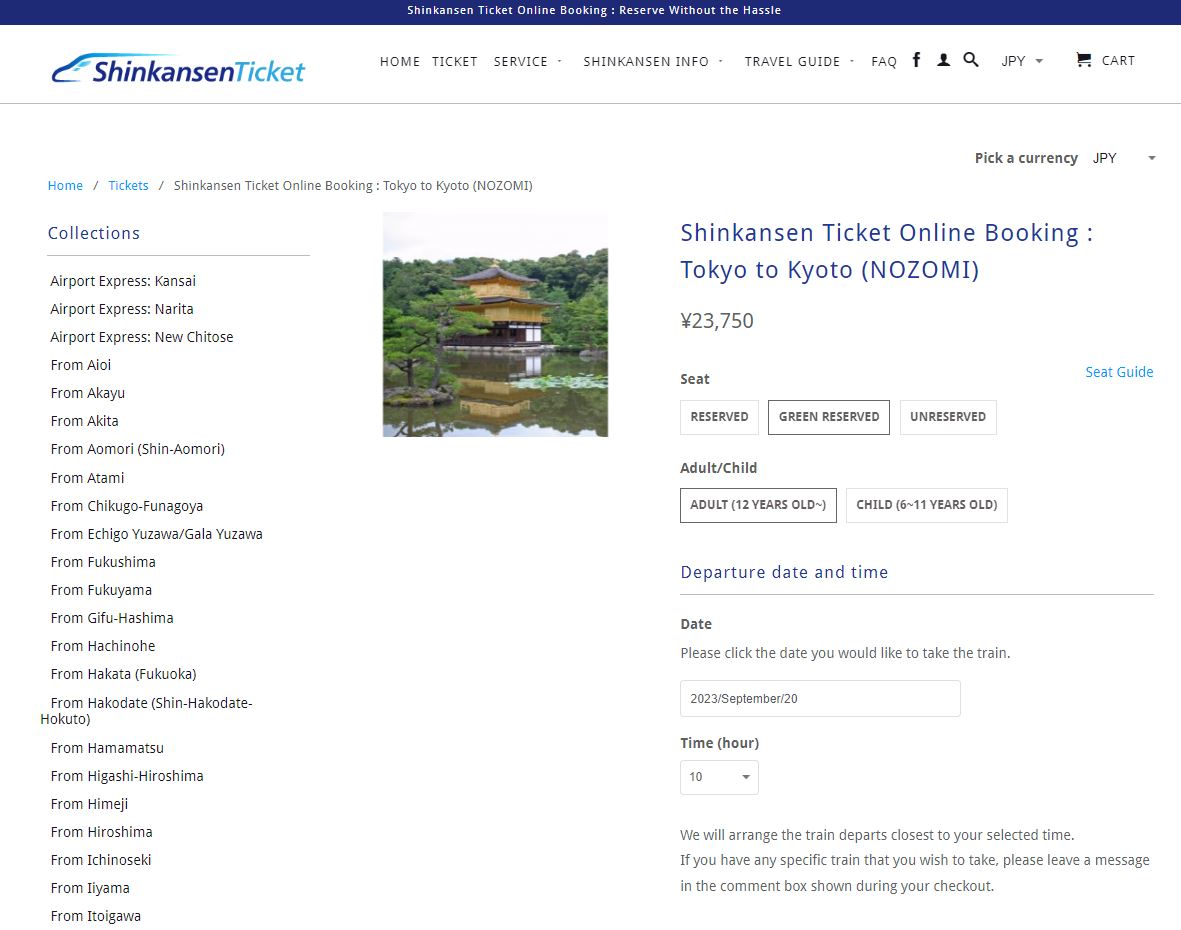
Shinkansen Ticket
Which ticket class should you book?
As I’ve alluded to earlier in the post, I recommend buying green class tickets if you have checked size suitcases. Since I doubt I’ll ever fly business or first class during my lifetime and the trip was around my Mum’s birthday, I splurged for the green tickets for us and it was worth it in my opinion (my Mum did too!)
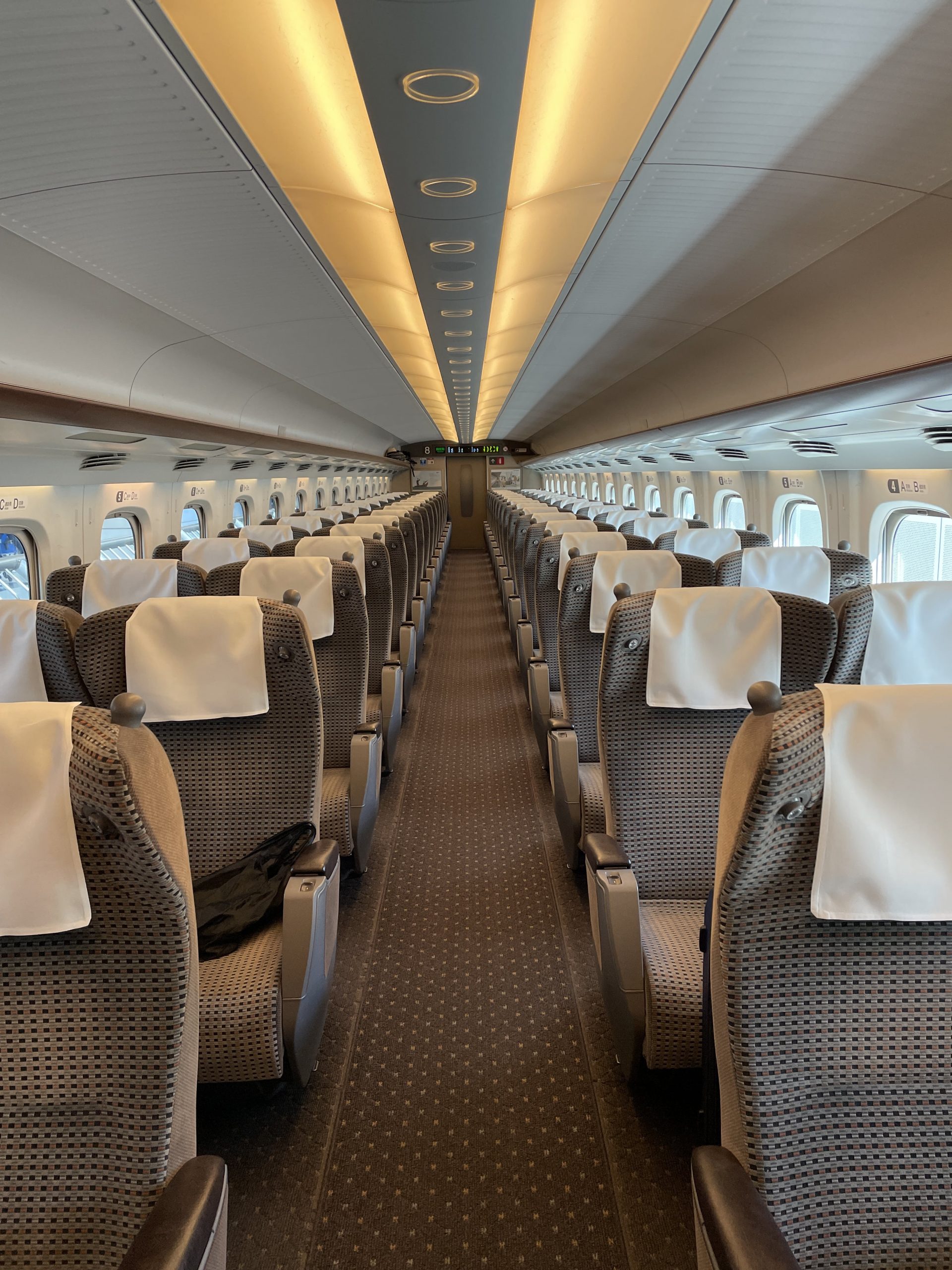
The seats are wide (similar to long haul flight seats) and comfortable. There was a tray table and charging ports at the seats too.
You can book either reserved or unreserved seats for ordinary class (economy) or green class (business).
If choose an unreserved seat, you can sit in any seat in an unreserved car of the train. The middle cars (think it was 7, 8 and 9) are reserved for green class only with allocated seating. If the train carriage is fairly empty you can always switch to another vacant seat.
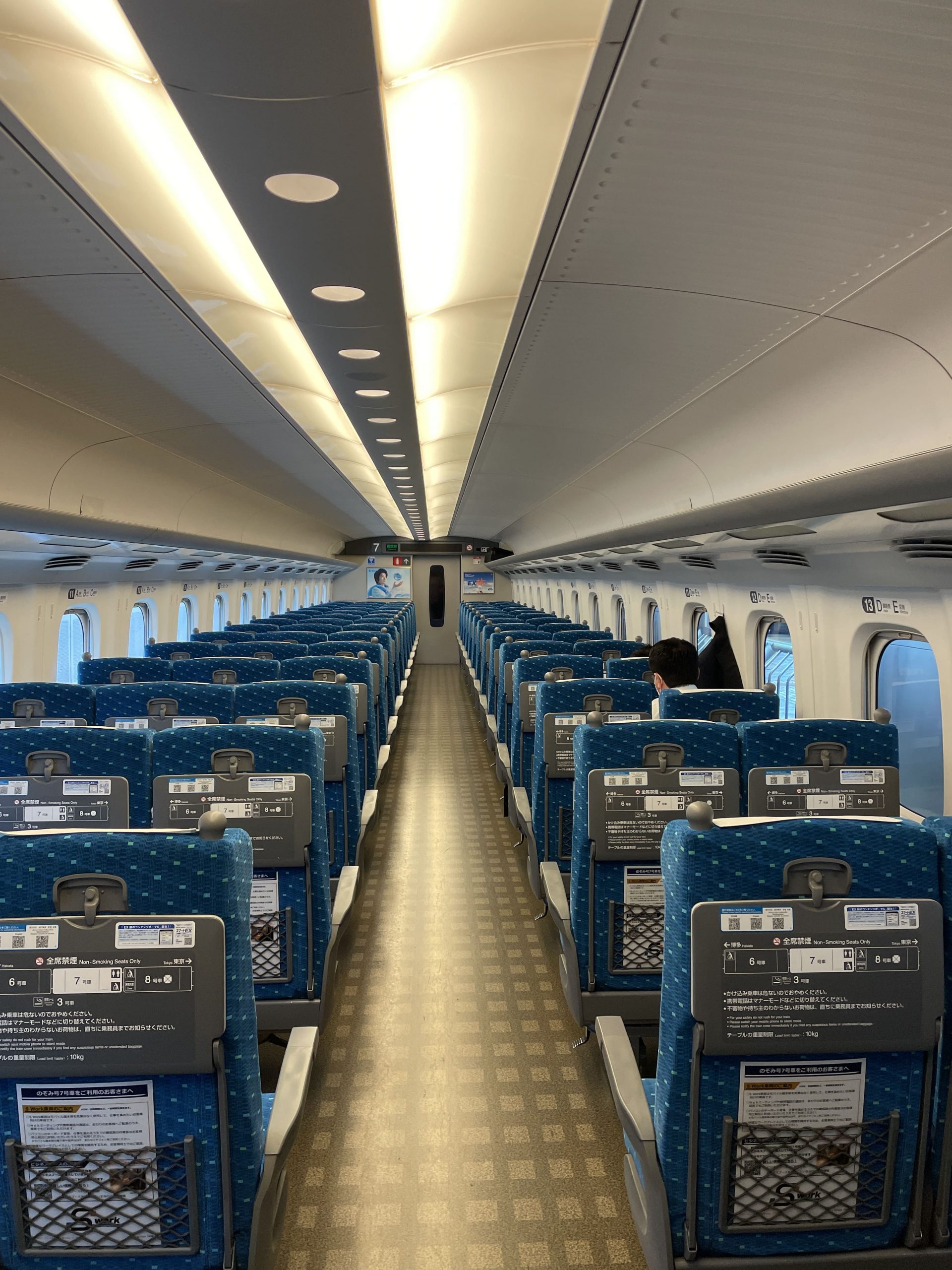
Is the JR Pass worth it?
The JR Pass does NOT include the fast bullet train between Tokyo and Kyoto – you have to take the slow train (about 3hr 40 min versus 2hr 40 min). I wanted the ‘true’ bullet train experience on the fastest route possible from Tokyo and Kyoto so the JR Pass was out for me.
If you want to calculate whether the JR Pass is worth it or not, the JR Pass website has a JR fare calculator where you can input where you want to go and it will tell you how much you could potentially save. But I actually found this calculator on the japan-guide website to be more helpful (and quicker).
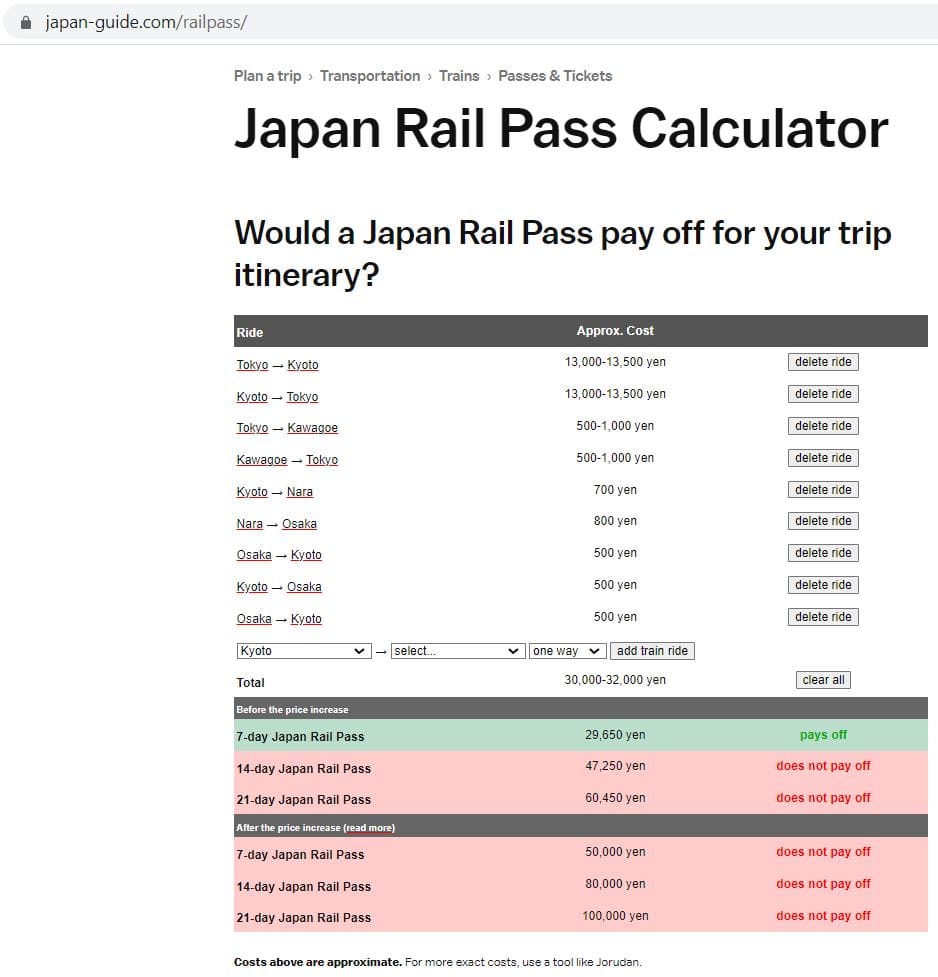
You’ll also need to check if the JR Pass must be used on consecutive days as it probably won’t be worth it for the days spent in the cities unless you’ll be doing day trips (e.g. Nara, Kawagoe). For my itinerary I was spending 11 days so while the calculator said that the 7 day pass would be worth it (just), I wouldn’t get the full benefit as some of my travel days would fall outside of the 7 days in the pass.
The local trains were about 220 Yen per trip and I used those about 4 – 6 times per day to navigate around the cities (Tokyo, Kyoto and Osaka) which doesn’t add up to costing much. Plus you’ll also need to check which routes you want to travel on, as the JR Pass can only be used on JR rail lines.
I also found it more convenient to just buy tickets on the go.
How much does the bullet train cost?
It depends on a few things:
- The route you’re taking
- The stations you’re travelling to
- Which class you’re travelling in
- If you need oversize luggage storage
- How you book them (if you book via Shinkansen Ticket like I did, you’ll probably pay a bit more for the convenience. There is no extra fee to ship the tickets to your hotel)
I’m unsure if the ticket price increases the closer it gets to your departure date. I booked my tickets on the 1st of March for a trip in the last week of March / first week of April. It cost me 47,500 yen per person for Tokyo – Kyoto and Kyoto – Tokyo in green class.
Tip! How to use the train tickets
I was a bit confused at first as I was taking the bullet train twice however received 4 train tickets. After asking an attendant at the train station (who thankfully spoke English), they explained they need to be put through the ticket machine together so that they both get hole punched.
How frequent are the trains?
Very frequent! The most frequent long distance train service I’ve come across in my travels . At peak hour (until about 10am), there were trains coming and going every 10 – 15 minutes, at each platform. Makes for a very busy train station and plenty of photo opportunities if you get there way too early like I did. I got to the station an hour before the train was due to depart, it only took 15 minutes to find / get to the platform.
Outside of commuter times, the trains were approximately every 20 – 30 min during the day although this depends on the route you take.
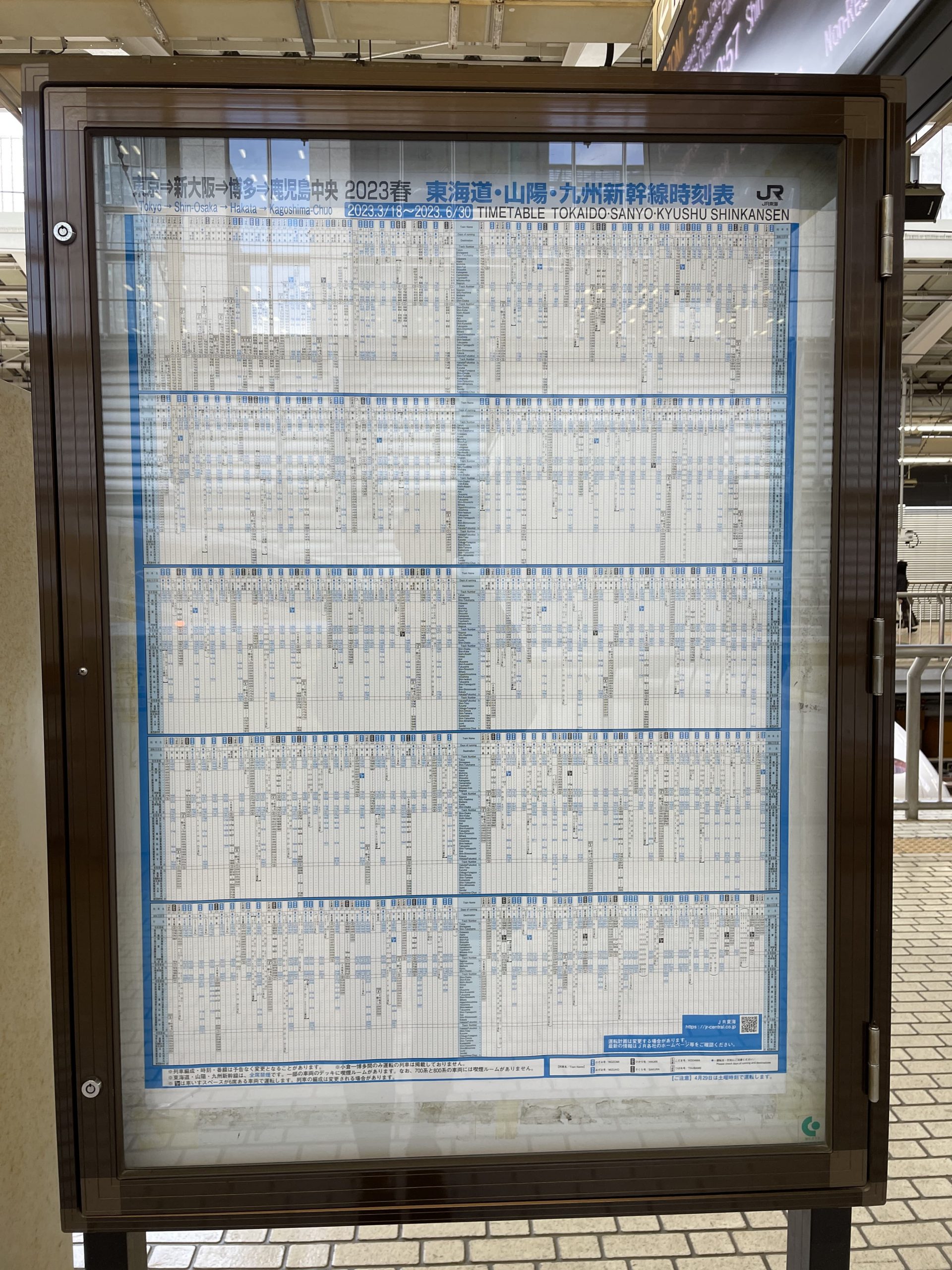
I’m not sure the Google Translate app will work with this train timetable…
Toilets
Yes, I’m one of those people that go to the train toilet for the purpose of checking out the toilet. I’m pleased to report that the toilets were very clean and there was decent soap to wash your hands with.
Food on board
Food and drink is not included in the ticket price, even for green class. Instead, there’s a little cart that goes up and down the train if you want to buy anything, or you can buy a bento box (like a packed lunch with an assortment of things) at the train station before you board. We just bought our own snacks – it’s fine to eat on long distance trains in Japan.
Does the train feel fast?
There are different bullet trains which travel at different speeds. I took the extra fast one (Nozomi) which goes up to 300 kilometres an hour. It takes off slightly faster than a normal train, then takes about 5 minutes to get out of the built up city area after the last central Tokyo stop, and then it really gets going. It doesn’t feel that fast when you’re sitting and thankfully I didn’t feel dizzy looking out the window. But you’ll notice the speed if you get up to go to the toilet, I had to brace myself against the wall when washing my hands.
Can you see Mount Fuji from the train?
Yes! On a clear day you can see Mount Fuji. Make sure you sit on the right side of the train from Tokyo to Kyoto, sit on the left side from Kyoto to Tokyo. Mount Fuji is about 40 – 45 minutes outside of Tokyo.
If you book tickets through Shinkansen Ticket like I did, you can add a note asking them to book you seats on the Mount Fuji side (and they’ll actually do it for you, for no extra charge).
The train goes through cities, tunnels and farmland.
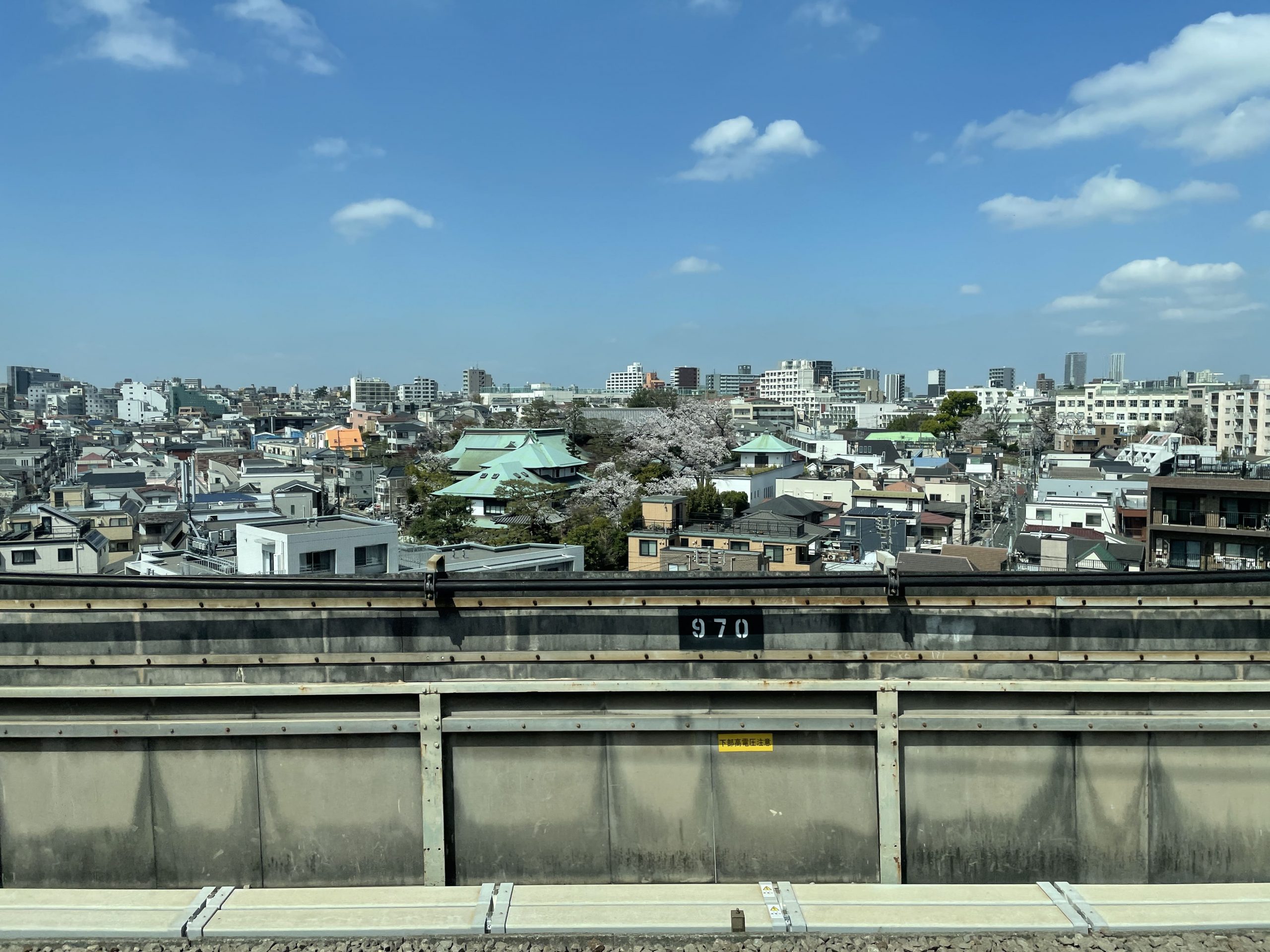
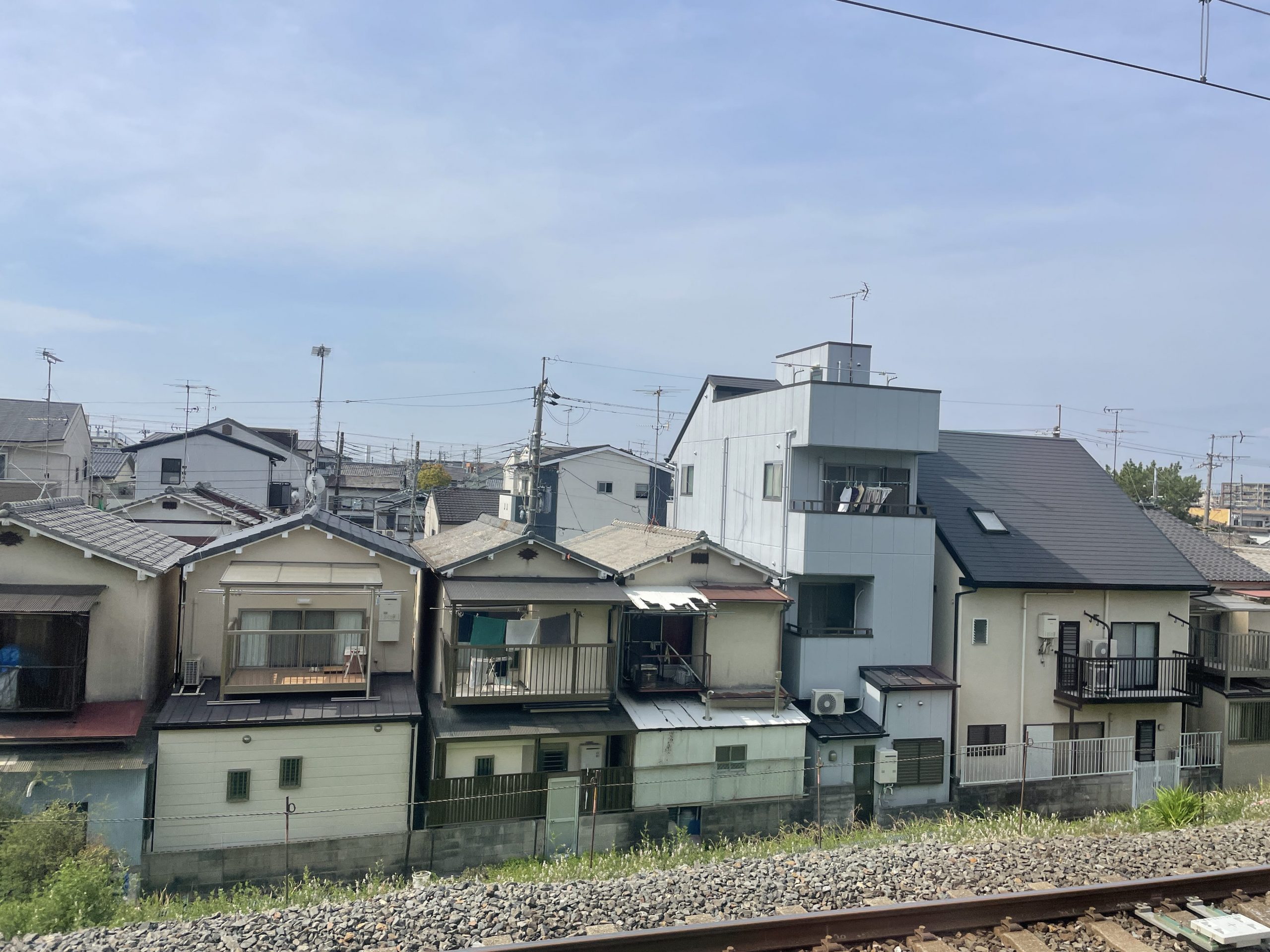
Do I recommend the bullet train?
Definitely! It was one of the highlights of my Japan trip. The trains were on time, very clean, the seats were comfortable, boarding was in an orderly fashion, the trains arrived and departed on time, they give you warnings (in Japanese and English) about upcoming stops and the bathrooms were clean.
The only con for me was the lack of luggage storage for larger suitcases. Because the train is so efficient, the Japanese locals just had carry on size luggage for their quick weekend or short stay trips. It was only foreign tourists that had large luggage. If you’re an elderly person you’ll need to be very organized as the train barely stops for 2-3 minutes at each station so you must be ready at the door to quickly get off and on with your luggage immediately after the train comes to a stop.
Travel planning tips
- How I make my travel photobooks using Blurb (detailed tutorial, review and download a copy of my workflow printable)
- Travel Planning: 50 Things to consider when planning an itinerary
- Visit a City versus Google My Maps: which is better for visually planning your travel itinerary
Found this post helpful?! Pin it!
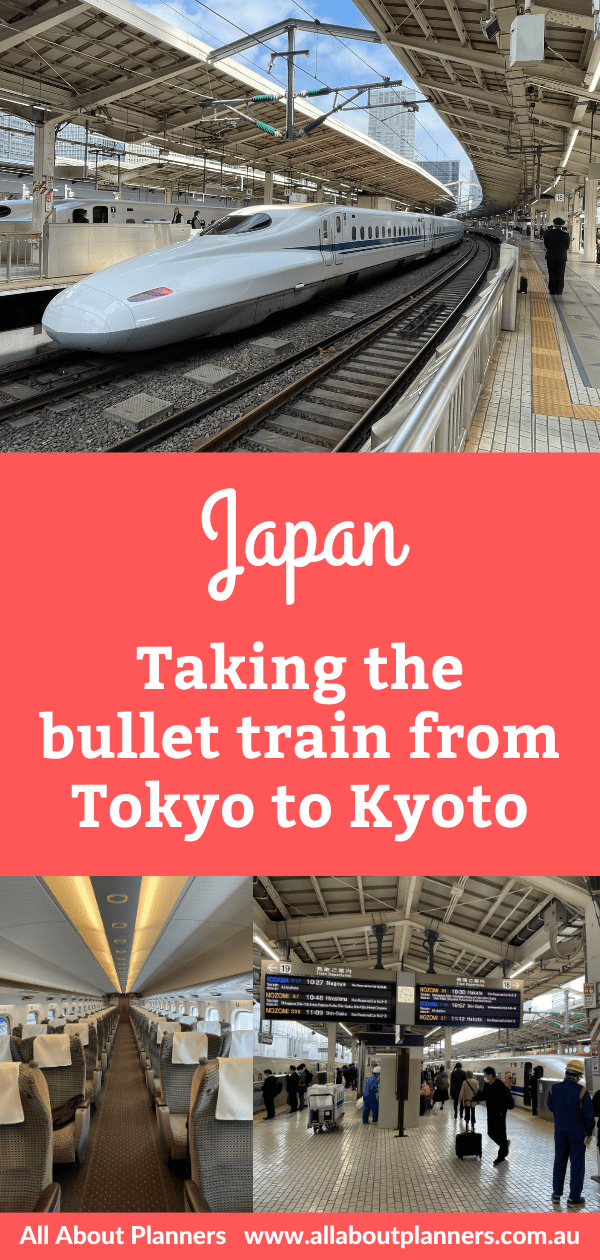
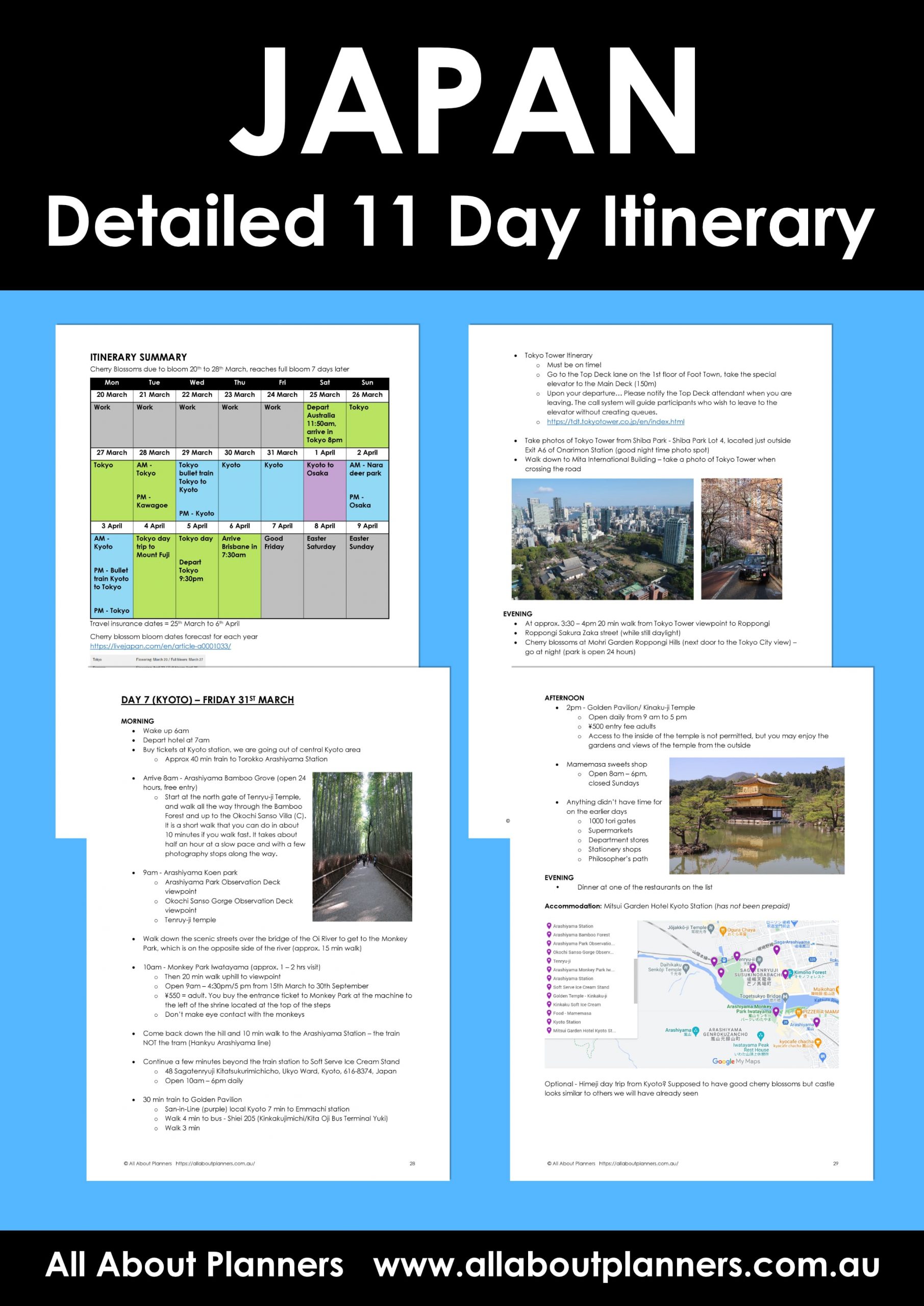
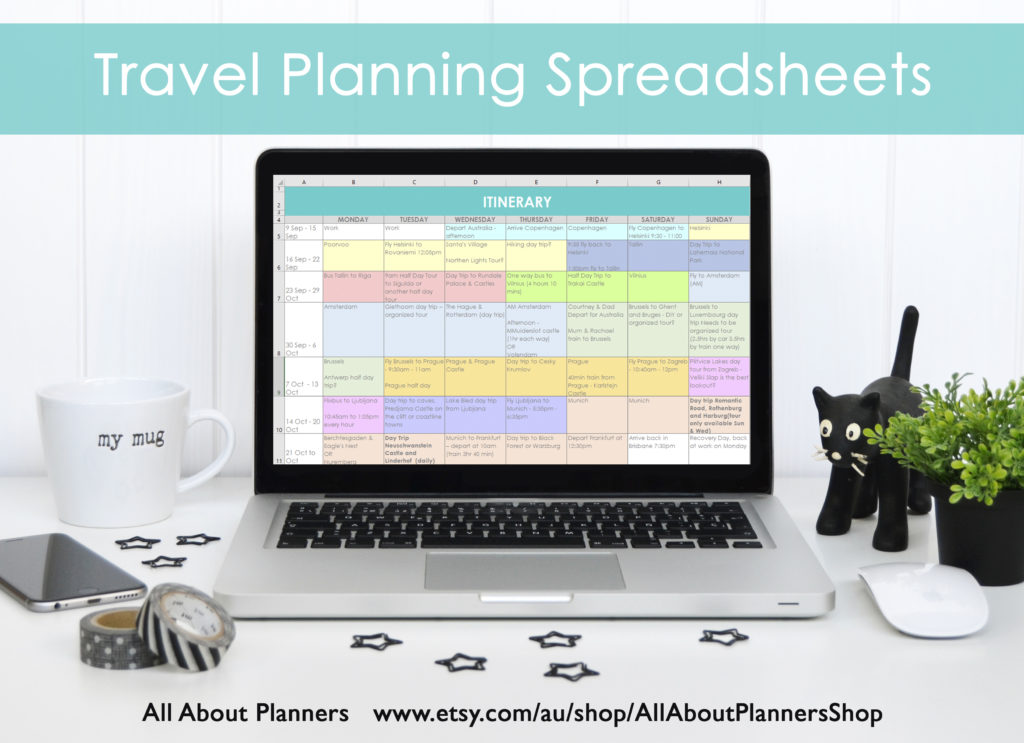
Leave a Reply